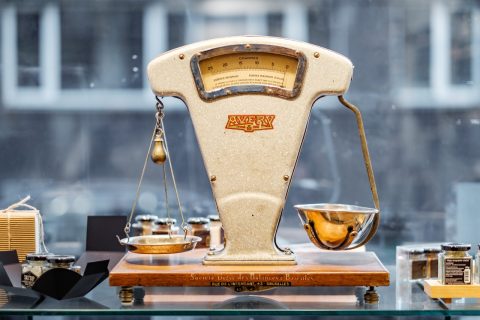For engaged investors, dividend stocks are an attractive choice for retirement portfolios. The appeal of dividends is twofold. First, they provide a source of income to help cover retirement expenses. Second, they offer the potential for capital appreciation.
Over time, reinvested dividends compound your earnings, providing investors with the potential to grow their portfolios and annual income.
Although dividend stocks may offer some advantages, they also come with risks. For example, companies that pay high dividends may be more likely to cut their dividends in tough economic times. And, like all stocks, dividend stocks are subject to market volatility. As a result, investors should carefully consider their goals and risk tolerance before investing in dividend stocks.
To help you evaluate performance, you can track a few key ratios. Tracking ratios will help you determine whether or not a particular stock is worth keeping or purchasing, depending upon your strategy. In the past, tracking these ratios was complex. Today you can use dashboards like Track Your Dividends to view and compare metrics across many stocks at one time.
This blog post will discuss the top three ratios to consider when evaluating dividend stocks. Understanding these ratios allows you to make more informed investment decisions and adjust your portfolio as needed.
Eyeing Company Earnings With the Payout Ratio
Investors use the payout ratio to evaluate a company’s ability to pay dividends.
When it comes to dividend stocks, the payout ratio is a key metric to watch. This ratio measures the percentage of a company’s earnings that are paid out in dividends, and it can give you a good sense of how sustainable a dividend is.
A high payout ratio means the company is paying out a greater portion of earnings in dividends, which can pressure the company’s financials. On the other hand, a low payout ratio may indicate that the company is more focused on reinvesting for growth rather than returning income to investors.
You calculate the payout ratio by dividing the company’s annual dividend per share by its annual earnings per share. The lower the payout ratio, the more sustainable the dividend. A company with a high payout ratio is at risk of cutting its dividend if earnings fall.
There are a few things to keep in mind when using payout ratios to evaluate dividend stocks:
- Companies in different sectors have different average payout ratios. For example, utility companies typically have higher payout ratios than tech companies.
- Payout ratios can vary over time for the same company. A company may have a low payout ratio during a period of strong earnings growth and then a high payout ratio during a period of earnings decline.
- Be sure to compare a company’s payout ratio to similar companies. A company with a high payout ratio may still be a better investment than its peers if it has a history of strong earnings growth or if its dividend is well-covered by earnings.
Spotting Opportunities With the Dividend Yield Ratio
The dividend yield ratio helps investors determine how much income they can expect from a dividend stock relative to its current market price. A high dividend yield could indicate that a stock is undervalued and may be a good investment opportunity.
The dividend yield ratio indicates how much a company pays out in dividends each year relative to its stock price. For example, a company with a dividend yield of 3% would pay $0.30 in dividends for every $10 in stock price.
Dividend yield can be a useful metric for evaluating dividend stocks, but it is important to understand the limitations of this metric.
- It does not consider the stability of a company’s dividend payments. A stock with a high dividend yield may be at risk of cutting or eliminating its dividend in the future.
- Second, dividend yield does not indicate whether a stock is undervalued or overvalued.
Reviewing both the dividend yield and the payout ratio can help evaluate whether the dividend is sustainable in both the short and long term. Investors should use more than just the dividend yield when analyzing dividend stocks.
Tracking Growth Clues With the Price to Earnings (P/E) ratio
The P/E ratio measures how much investors are willing to pay for each dollar of earnings a company generates. A high P/E ratio means that investors are paying a lot for each dollar of earnings. This means the company must deliver significant growth to justify the current market price.
A low P/E ratio means that investors are not paying as much for each dollar of earnings. It may suggest that the stock is undervalued. Or, the company could be in a slower growth industry less impacted by economic ups and downs.
When it comes to dividend stocks, a high P/E ratio isn’t necessarily a bad thing. Many successful dividend stocks have high P/E ratios. It’s important to remember that a high P/E ratio can also be a sign of overvaluation. When evaluating dividend stocks, always consider the P/E ratio along with other factors such as the company’s financial stability, dividend history, dividend yield, payout ratio, and growth prospects. Finally, looking at a company’s historical dividend payments and dividend growth also indicates their commitment to dividends. By considering all of these factors, investors can make more informed decisions about which dividend stocks are worth buying.
The overall point is that no one or two ratios tell you the whole story about a dividend stock. Strategic investors consider several ratios and other company information when evaluating dividends stocks. TrackYourDividends makes it easy to get started. If you have questions about retirement investing strategies such as dividend stocks or covered calls, our colleagues at Snider Advisors offer free courses and other services. We’re happy to help!




